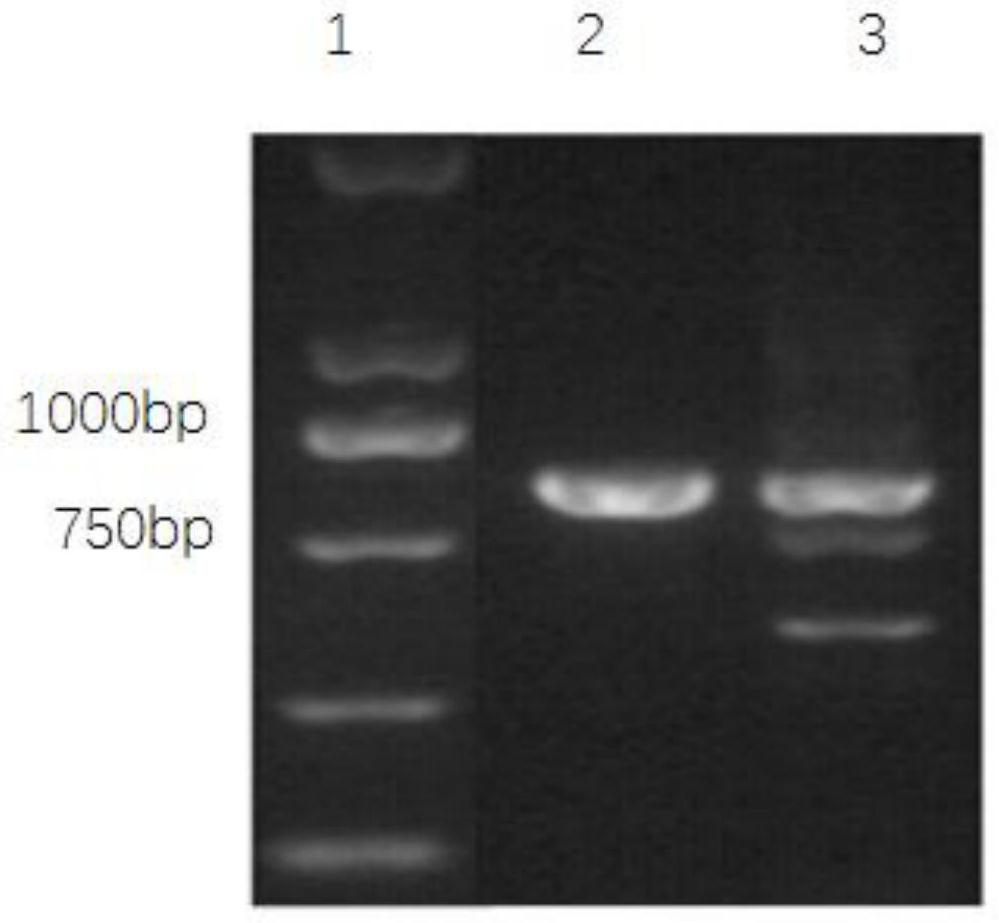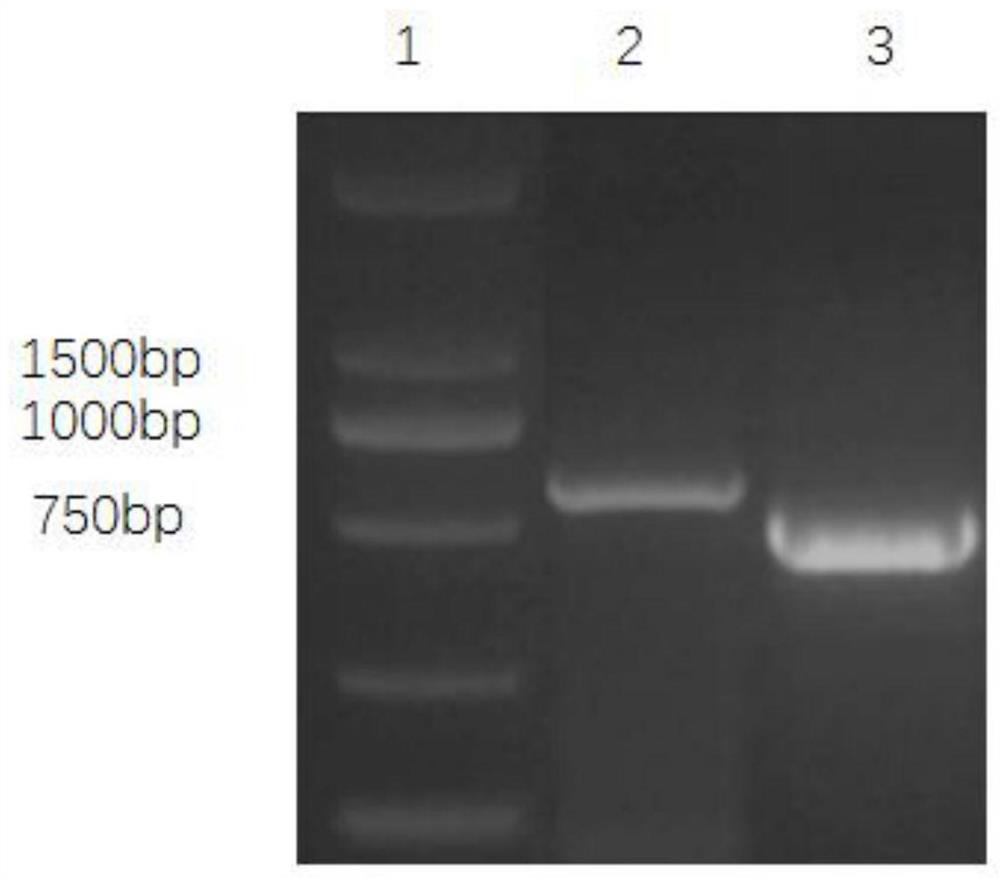Method for constructing MLH1 gene knockout cell line
A construction method and gene knockout technology, applied in the field of genetic engineering, to achieve low cost and increase the positive rate
- Summary
- Abstract
- Description
- Claims
- Application Information
AI Technical Summary
Problems solved by technology
Method used
Image
Examples
Embodiment 1
[0039] Embodiment 1: vector construction
[0040] 1) sgRNA design of MLH1 gene
[0041] For the MLH1 gene (gene name: MLH1, gene ID number: 4292, see https: / / www.ncbi.nlm.nih.gov / gene / ?term=4292 for gene details), search and download the MLH1 part on the Genebank website Genome sequence (Seq-A):
[0042] GATTGGCTGAAGGCACTTCCGTTGAGCATCTAGACGTTTCCTTGGCTCTTCTGGCGCCAAAATGTCGTTCGTGGCAGGGGTTATTCGGCGGCTGGACGAGACAGTGGTGAACCGCATCGCGGCGGGGGAAGTTATTCCAGCGGCC; in the mRNA introduction, link to the Ensemble website, find its exon sequence and mark it.
[0043] Use online software (http: / / crispor.tefor.net / ) to design sgRNA, input the above exon sequence, set and retrieve several sgRNA sequences, and analyze the position of sgRNA on the gene sequence and the off-target of the sgRNA ( Off-target) information, from which one optimal upstream sgRNA sequence is selected, as shown in Seq-1; one optimal downstream sgRNA sequence, as shown in Seq-2, is specifically shown in Table 1:
[0044] Ta...
Embodiment 2
[0063] Example 2. Preparation of MLH1 gene knockout HeLa cell line
[0064] 1. PX459M-MLH1-sgRNAs transfected HeLa cells
[0065] 1) Cells were inoculated in a 12-well plate, and the suspension of HeLa cells (from Wuhan Puruosai Life Science and Technology Co., Ltd., product number: CL-0101) was taken, and the mixture was divided into 2.5×10 5 Inoculate the number of cells per well, spread evenly into 2 wells of a 12-well plate, add 1mL complete medium (containing 10% fetal bovine serum, 1% double antibody) respectively, and place in a cell incubator for 12-16 hours;
[0066]2) To prepare the transfection complex, take out 2 sterile EP tubes, add 50 μL serum-free and antibiotic-free DMEM basal medium respectively, and add 3 μg of PX459M-MLH1-sgRNAs recombinant plasmid (experimental group) to the first sterile EP tube, Add 3 μg of PX459M-GFP plasmid (control group) to the second sterile EP tube, mix well, and call it solution A; take out another sterile EP tube, add 100 μL ser...
PUM
 Login to View More
Login to View More Abstract
Description
Claims
Application Information
 Login to View More
Login to View More - R&D
- Intellectual Property
- Life Sciences
- Materials
- Tech Scout
- Unparalleled Data Quality
- Higher Quality Content
- 60% Fewer Hallucinations
Browse by: Latest US Patents, China's latest patents, Technical Efficacy Thesaurus, Application Domain, Technology Topic, Popular Technical Reports.
© 2025 PatSnap. All rights reserved.Legal|Privacy policy|Modern Slavery Act Transparency Statement|Sitemap|About US| Contact US: help@patsnap.com



